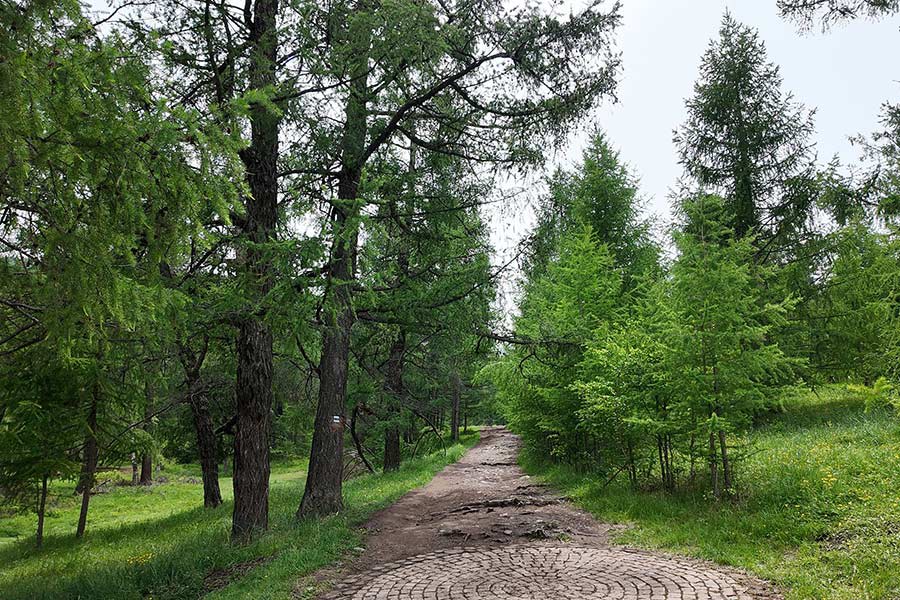First national park isn't in the US — it's in Mongolia

The Ancient Legacy of Bogd Khan Uul
While many American schoolchildren learn about Yellowstone as the world's first national park, a hidden gem in Mongolia offers a compelling alternative. Located just south of Ulaanbaatar, the capital city, Bogd Khan Uul stands as a mountain with a rich historical and cultural significance that predates Yellowstone by several centuries.
A Historical Connection to Genghis Khan
Bogd Khan Uul is deeply rooted in Mongolian history, with ties to Chinggis Khan, who founded the Mongol Empire in the 1200s. The mountain has long been considered sacred, and its protection dates back to the 13th century. Toghrulkhan, a close ally of Genghis Khan’s father, was instrumental in preserving the area. According to the "Secret Lives of the Mongols," one of the oldest existing books in Mongolia, Toghrul prohibited activities such as hunting and logging, ensuring the preservation of the region.
UNESCO Recognition and Natural Beauty
In 1996, Bogd Khan Uul was designated a UNESCO biosphere reserve, highlighting its ecological importance. Visitors are greeted by the serene landscapes of the Terelj River, which winds through dense forests of pine, birch, and aspen trees. White butterflies flit through the air, creating an enchanting atmosphere that contrasts sharply with the bustling city of Ulaanbaatar.
The park is home to a variety of native wildlife, including the rare musk deer, known for its tusk-like teeth, and the Arctic hare. Eagles, vultures, marmots, and wild boars can also be spotted, making it a haven for nature enthusiasts.
Cultural Significance and Spiritual Beliefs
For many Mongolians, Bogd Khan Uul holds deep spiritual meaning. Saruul-Erdene Myagmar, a Mongolia specialist at the Library of Congress, explains that the mountain is considered sacred. “Bogd” translates to “saint,” while “uul” means mountain, and “Khan” is a ceremonial title. This combination gives the name “the Khan’s saint’s mountain.”
Mongolians believe that mountains and rivers have their own owners, often referred to as spirits. Offending these spirits is thought to bring misfortune. This belief is reflected in the presence of ovoos, or sacred cairns, scattered throughout the park. Visitors are advised to respect these sites and avoid leaving trash or using the bathroom outside designated areas.
Historical Claims and Global Recognition
Although Bogd Khan Uul was officially recognized as a protected area in 1778, many Mongolians consider its protection to have begun in the 13th century. This places it ahead of other notable protected areas, such as the Tobago Main Ridge Forest Reserve, established in 1776, and Yellowstone, which was founded in 1872.
Despite its historical significance, Bogd Khan Uul remains relatively unknown outside of Mongolia. This is partly due to the country's remote location and limited international tourism. However, Mongolia is investing heavily in tourism, aiming for the sector to contribute 10% to its economy by 2030. In 2024, approximately 808,000 foreign tourists visited the country, marking a significant milestone.
Exploring the Park: Hikes and Ger Camps
Visitors to Bogd Khan Uul can enjoy a range of hiking trails, from easy to difficult, all well-marked. For those seeking a more immersive experience, local companies offer ger camps—traditional Mongolian tents where travelers can spend the night. These rustic accommodations provide a unique opportunity to experience the tranquility of the park, especially during stargazing or snowfall.
Getting There and Around Ulaanbaatar
Bogd Khan Uul is only about 10 miles south of Ulaanbaatar, but traffic can make the journey take up to an hour during peak times. Travelers are advised to visit on weekdays after morning rush hour to maximize daylight for exploration.
Public transportation in Ulaanbaatar is limited, with buses and personal vehicles being the primary options. Taxis are available, though they are not always labeled. An app called UBCab offers English functionality, but cash payments are typically required.
Beyond Bogd Khan Uul: Mongolia’s Diverse Landscapes
Mongolia boasts a wealth of natural beauty beyond Bogd Khan Uul. The country is home to 29 national parks, including the Gobi Desert, the UNESCO-listed Orkhon Valley, the Altai Mountains, and Lake Khuvsgul, one of the deepest freshwater lakes in the world. These diverse landscapes offer visitors a chance to explore the vast and varied terrain of this landlocked nation.
Post a Comment for "First national park isn't in the US — it's in Mongolia"
Post a Comment